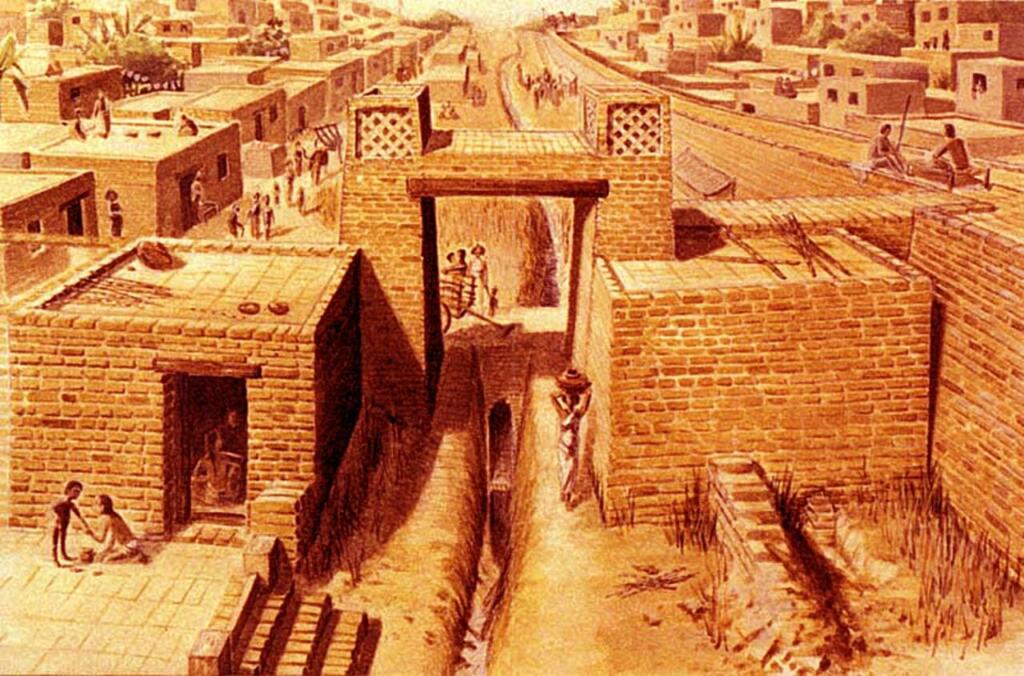When we were subjugated under the Islamic & British rule and told by invaders that we are the world’s most uncultured, degraded & uncivilized society. A ray of hope & confidence was generated in 1921 & 1922 when Harappa & Mohenjodaro, the two largest urban settlements were discovered. It showed the world that Bharat has always been time ahead of the other civilizations of the world. Its rich culture, literature, society, economy, industry, and trade was developed ahead of the other contemporary community structures.
Golden Jewelry at Rakhigarhi
In a recent excavation at one of the largest sites of IVC (Indus Valley Civilization), Rakhigarhi, a new set of evidence has been found which shows the well-developed evidence of the metallurgy and jewelry-making industry. Among the findings, are beads made up of agate & carnelian types of semi-precious stones, a ring made up of copper, the animal figurine of a dog, bull, rhinoceros made of terracotta & steatite, seals made of steatite which are highly polished & carved with precision suggesting the technology development of the time, and gold foil which is expected to be the part of gold ornaments.
हरियाणा के राखीगढ़ी में खुदाई में मिली कई महत्वपूर्ण चीज़े जिसमें तांबे और स्वर्ण आभूषण शामिल है जो मिट्टी के अंदर हजारों साल से कैद थी #ReporterDiary | (@varunjournalist) pic.twitter.com/skgl4mTWEq
— AajTak (@aajtak) May 7, 2022
According to the ASI (Archaeological Survey of India), the findings of the excavation suggest that there was a large & developed jewelry-making unit in that era. The small, precise & beautiful engineering skills of the semi-precious stones and metal suggest the level of technological development of the time. Speculating the use of such a small figurine, they said that Harappan people were using it for both ornamental as well as trade purposes. On the whole, IVC was a trading society and was years ahead of contemporary civilization.
IVC is ahead of the contemporary Civilizations
It is a matter of fact that the Indus Valley Civilization was much larger than the combined geographical area of Egyptian and Mesopotamian civilizations. The extent of IVC was modern-day Afghanistan, Pakistan, and the whole part of Northwest India.
All the respective civilizations were mostly structured on rural lines but IVC was purely matching the current level of urban planning. Its two major cities Harappa and Mohenjo Daro, display centralized planning, strong governance, development of engineering, and a lavish lifestyle.
IVC’s roads & drainage were built of burnt bricks on a grid pattern and in furtherance, to this, the drainage was covered & regularly cleaned by civil authorities reflecting the modern prospects of urban planning. Towns were divided into two parts one citadel and another lower city for the general public which shows the well-developed polity and governance system. Moreover, the findings of the Great Bath suggest the community & society were civilized and structured which were distantly found in both Egyptian and Mesopotamian civilizations.
Moreover, the constant excavations and findings are showing that IVC’s culture, polity, economy, trade & society matches the modern city planning and governance style of the world. The findings of seals show that some higher authorities used to manage & verify the purity of material and mercantile businesses. It resembles the building & architecture of homes, citadels, roads, and drainages showing that there was some centralized planning system to formulate and operationalize the policies. Furthermore, the recent findings of lots of ornamental and seal products made of precious stones and metals show that there was a sense of appearance and lifestyle consciousness which helped to develop a jewelry manufacturing unit.
Also Read: Mahabharata is older than what we have been told it is, a sensational new discovery reveals
